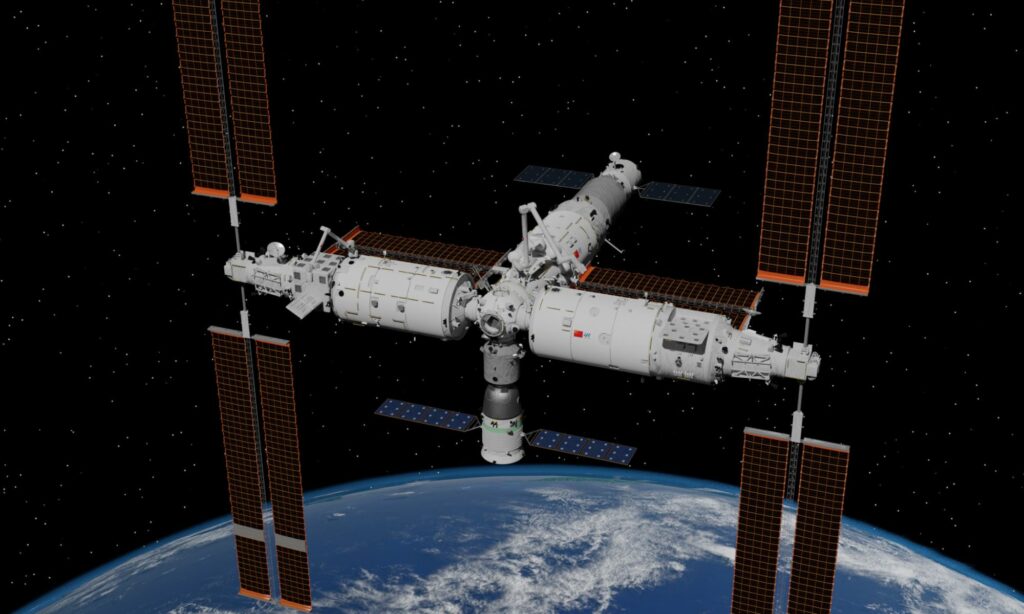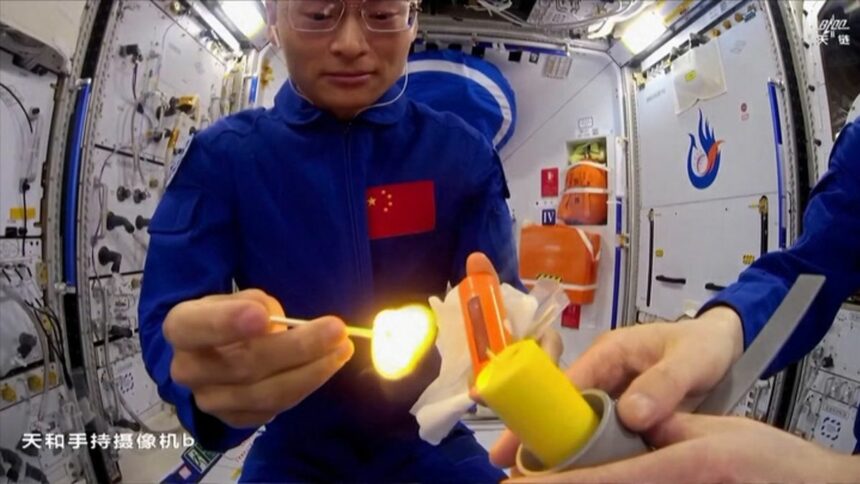Astronauts Gui Haichao and Zhu Yangzhu conducted the experiment, which involved lighting a candle in the microgravity environment of the space station. The live broadcast, which took place on September 21, provided viewers with a firsthand look at how flames behave differently in space.

One of the most striking observations from the experiment was the nearly spherical shape of the flames, a stark contrast to the familiar teardrop-shaped flames we encounter on Earth. On our planet, lit candles produce flames shaped by buoyancy-driven convection, where hot air rises and cold air descends. However, this convection process is considerably weakened in the microgravity environment of low Earth orbit. As a result, flames diffuse in all directions, giving rise to spherical fireballs.
The live lecture, part of the “Tiangong classroom” series hosted on China’s space station, allowed astronauts to interact with students from five different classrooms across China. During the lecture, Gui and Zhu demonstrated a range of microgravity phenomena, highlighting how various physical processes behave differently in space compared to Earth.
Notably, the candle experiment involved Gui striking a match to produce an open flame, a sight that might raise eyebrows among participants aboard the International Space Station (ISS). The ISS has stringent rules and safety measures in place, particularly regarding flammable materials and open flames. These precautions are in response to the significant fire incident that occurred on the Russian space station Mir in 1997.
The ISS typically conducts combustion experiments using specially designed equipment like the Combustion Integrated Rack (CIR), which isolates and contains the fire. This approach ensures safety while still allowing for valuable research on combustion in microgravity conditions.

Similarly, Tiangong has its own dedicated Combustion Experiment Rack (CER) for conducting rigorous research in this area. This facility enables scientists and astronauts to investigate the behaviour of flames, combustion, and related phenomena in space, advancing our understanding of fire safety and energy-efficient combustion processes.
The experiment conducted by Gui and Zhu serves as a captivating reminder of the scientific opportunities presented by space exploration. By studying how flames behave in microgravity, researchers can gain insights that have practical applications on Earth, from improving fire safety protocols to enhancing energy efficiency in combustion processes.
As China’s Tiangong space station continues to host groundbreaking experiments and educational initiatives, it contributes to the growing body of knowledge about life and science in space, ultimately benefiting humanity both on and off our planet.








